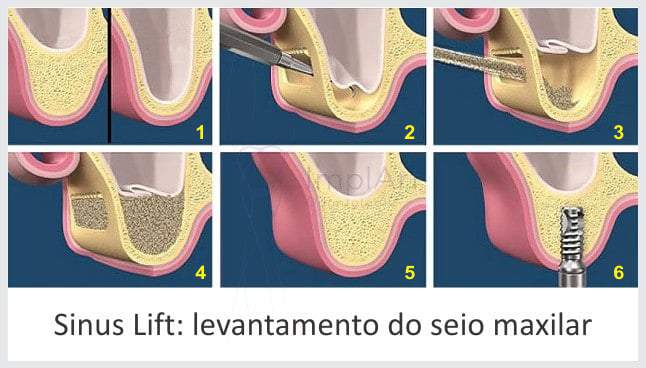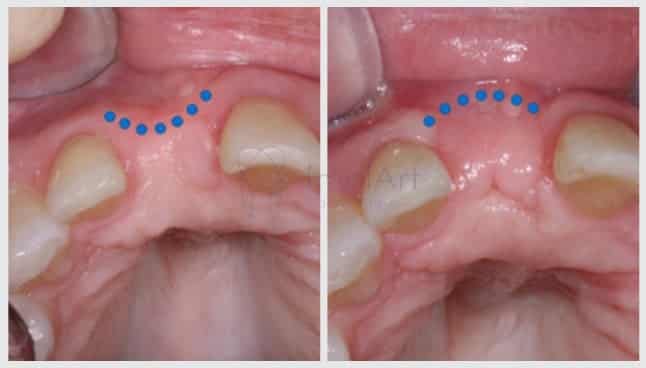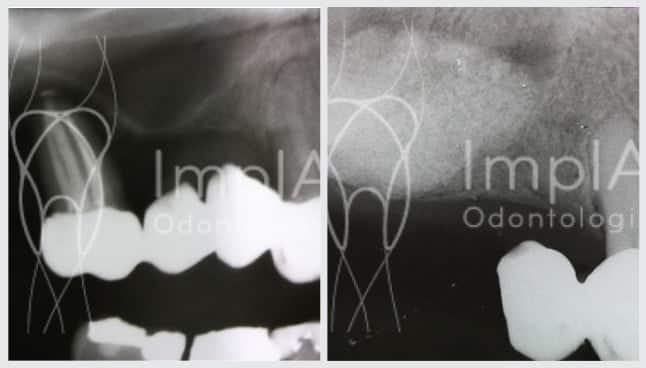
What are bone grafts?
Bone grafts are techniques to supplement the bone lost in the patient’s jaw. They can be performed simultaneously with the insertion of the dental implant, or require a healing period. Each indication will depend on an analysis of the patient’s case. But rest assured, today’s bone grafting techniques are very modern and painless for the patient. The results are certainly worth it because dental implants are the best solution for restoring missing teeth!
Know everything about dental bone grafts
Bone grafts are used to reconstruct the area that has lost height or thickness
In some cases, it is not possible to place dental implants without first doing bone grafts. People who have lost one or more teeth due to accidents or extractions always think about reconstructing their dental arch in order to smile without embarrassment and for this, dental implant placement is certainly an excellent option.
When people lose their teeth and don’t replace them immediately, they experience bone resorption. As a result, the bone in the area becomes thinner and taller, or has defects in its shape. In the upper jaw, the size of the maxillary sinus can increase, which in principle prevents implants from being placed. In addition, with tooth loss, expressions become limited, the mouth shrivels, chewing becomes difficult and speech can also be altered.
In this way , bone grafting serves to rebuild enough structure to allow the implant to be made, restoring the lost volume to the atrophied bone. For this technique, the dentist can use the patient’s own bone material, taken from the mouth (for small reconstructions) or taken from other sites, such as the hip bone (iliac) and skull cap (for large extensions).

There are different bone grafting techniques, each with its own particularities
In the case of smaller, more common grafts, the bone grafting procedure can be done in the office using local anesthesia. For larger areas, the surgical intervention is performed in a hospital by a larger, multidisciplinary team under general anesthesia. The patient does not lose teeth while the bone graft heals.
It is also possible to use a xenogenous bone graft crystal, when the bone comes from animals (freeze-dried bovine bone – Genox or Bioss), human bone from bone banks (bone transplant) or synthetic vitreous materials (synthetic hydroxyapatite). However, the most easily regenerated material is bone graft taken from the person themselves (autogenous bone).
Types of bone graft materials
The procedure can be carried out in fragments or as a block. Many people are afraid of undergoing a bone graft, but in fact the procedure can be very simple. All the materials are biosecure and undergo strict controls to prevent contamination.
Smaller bone grafts are non-invasive and can be used to supplement the bone around a newly placed implant. However, in people who have lost their teeth many years ago, larger bone grafts may be necessary. ImplArt’s philosophy is to avoid bone grafts and has mastered alternative techniques such as:
- Short implants
- Implant + simultaneousgraft
- All on four” technique for full arches
- Inclined implants
- Surgeries with surgical ultrasound (piezo)
Read more articles about dental implants on our Blog
Bone loss: causes
Bone loss can occur for a number of reasons, but the most common is tooth loss or extraction without immediate replacement. When a person loses their teeth, the body resorbs the bone in the maxilla or mandible because it understands that the bone no longer has a function (which was to provide support for the teeth). This loss is progressive and over the years the person has little bone volume in terms of height and width, which at first makes it difficult to place dental implants.

Maxillary sinus lift or sinus lift
A sinus lift is a surgical procedure for bone grafting in the posterior region of the upper jaw. The aim is to increase the amount of bone in height so that a longer dental implant can be placed.
When a person loses one or more teeth in the upper arch, there is a loss of bone in height and the maxillary sinus shrinks (fig.1). The procedure is carried out in this way: First, a small opening is made in the gum in the lateral region of the bone defect (fig.2).
A variable amount of bone regeneration precursor material is then placed inside this opening (figs.3,4). The surgery is quick and usually takes no more than 30 minutes with an experienced surgeon. Bone regeneration takes between 4 and 9 months (fig.5), and then the implants are placed (fig.6), but radiographic examinations are carried out beforehand to check the progress of bone regeneration.
Materials used in bone grafts
Nowadays we have a variety of materials that can be used for bone grafts in the maxillary sinus:
- Bovine freeze-dried bone – Genox
- Autogenous bone (from the person)
- Synthetic hydroxyapatite (bone precursor)
- Bone bank homologous bone (bone transplant)
- Synthetic vitreous materials – Bioss
- Grafts with biological stimulators such as fibrin (PRF), platelets (PRP), or bone proteins (BMP)
Studies show that all materials are favorable for this type of graft, depending only on the surgeon’s preference.


The ImplArt Clinic has experience in various grafting techniques
Dr. Roberto Markarian, coordinator of Clinica Dentaria ImplArt, is an experienced dental implant specialist with thousands of implants installed. Due to his extensive clinical and surgical experience, he has been able to carry out countless cases of rehabilitation without the need for bone grafting and which had been indicated for grafting by other specialists.
Each case is assessed individually during a consultation. If you have any questions about the price of treatment, values or planning, please contact us or schedule a consultation 📲WhatsApp(11) 3262-4750. Bone grafts are different from gum grafts in terms of techniques and objectives.
Read all about bone and gum grafting
 Agende sua consulta agora por WhatsApp
Agende sua consulta agora por WhatsApp
Leave a Reply